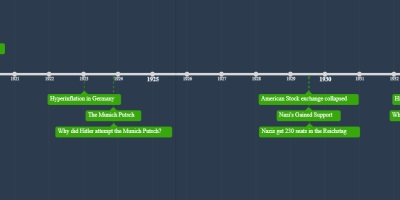17 h 44 m, 11 ene 1923 año - Hyperinflation in Germany
Descripción:
The sudden flood of paper money into the economy, on top of the general strike - which meant that no goods were manufactured, so there was more money, chasing fewer goods - combined with a weak economy ruined by the war, all resulted in hyperinflation.Prices ran out of control - eg a loaf of bread, which cost 250 marks in January 1923 had risen to 200,000 million marks in November 1923. German's currency became worthless.
A woman lighting her stove using money
Some people used money as fuel.
There are lots of almost amusing stories about people's wages and examples of just how fast inflation pushed prices up during the crisis:
People collected their wages in suitcases.
One person, who left their suitcase unattended, found that a thief had stolen the suitcase but not the money.
One boy, who was sent to buy two bread buns, stopped to play football and by the time he got to the shop, the price had gone up, so he could only afford to buy one.
One father set out for Berlin to buy a pair of shoes. When he got there, he could only afford a cup of coffee and the bus fare home.
But remember:
Some people made fortunes during the crisis. One man borrowed money to buy a herd of cattle, but soon after paid back his loan by selling one cow.
People on wages were safe, because they renegotiated their wages every day.
Pensioners on fixed incomes and people with savings were the most badly hit. One woman sold her house with the intention of using the money to live on. A few weeks later, the money wasn't even enough to buy a loaf of bread.
Añadido al timeline:
fecha:
17 h 44 m, 11 ene 1923 año
Ahora mismo
~ 102 years ago
